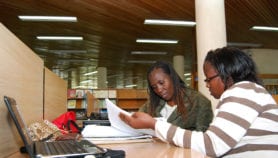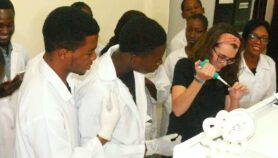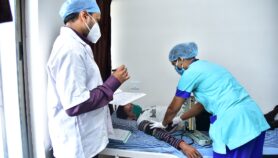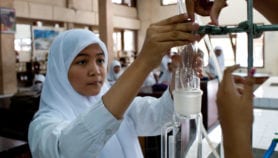By: Luisa Massarani
Send to a friend
The details you provide on this page will not be used to send unsolicited email, and will not be sold to a 3rd party. See privacy policy.
[RIO DE JANEIRO] Spending on science and technology by the countries of Latin America and the Caribbean currently represents only about 1.9 per cent of the world’s total, even though the region holds 8.5 per cent of the world’s inhabitants, according to a new survey.
The figures come from the Ibero American / Inter American Network of Science and Technology Indicators (RICYT), which found that there were 260,000 individuals involved in scientific activities in the region, including 128,000 researchers (the rest were primarily technicians and support staff).
This represents about 2.7 per cent of the international scientific community — a figure comparable to Canada, or the countries of Scandinavia.
Total investment in science and technology (S&T) in the region in 1999 came to about US$10 billion. This compares to an investment by Canada of about US$12 billion in the same year; the United States, in contrast, spent US$250 billion.]
Figures for scientific publications reflect roughly the same distribution. Of 946,000 scientific publications registered by the Science Citation Index in 1998, only 24,000 — or 2.5 per cent — were from Latin America and Caribbean countries.
“Brazil is the most successful country in S&T in the region”, says Mario Albornoz, a researcher from the National University of Quilmes, Argentina, who acts as the international co-ordinator of the RICYT and directed the study.
The evidence for this, he says, is that the country employs a significant number of scientists, and invests around 1 per cent of its gross domestic product (GDP) for scientific research and development; in contrast, the regional average is 0.53 per cent.
Furthermore, points out Albornoz, about half of the scientific papers published in Latin America come from Brazil.
The survey shows that a number of small countries, such as Costa Rica and Cuba, were still able to develop moderately strong S&T structures. Both invest significantly in research and development, namely 1.13 and 0.83 per cent of their GDP, respectively.
In contrast Argentina, despite its strong scientific tradition, is characterised by a relatively low level of investment in science — 0.54% of the GDP — and unstable policies in the area.
The survey shows that funding for science is also relatively low in Mexico, at 0.41% of the GDP. Despite this, however, Mexico conducts good quality research, and this is reflected in the number of scientific publications that it produces.
In contrast, there are few encouraging signs for science and technology in many other Latin American countries, particularly the small ones, says Albornoz. “In almost all the cases, this is because of a number of factors, including a chronic lack of funding, problems with the institutional structure, a lack of awareness of the importance of science, and a weak educational system,” he says.
He points out that the scientific and technological capacity of the whole of Latin America is comparable to that of a single industrialised country, such as Canada. “Our disadvantage, however, is that our resources are scattered, and we have very little capacity for collective work, or for consolidating our efforts into a common critical mass,” Albornoz concludes.
“We should be engaged in creating a truly integrated system for science and technology in Latin America. At the very least, we should try to do this within the framework of Mercosur [the common market for the ‘Southern Cone’ countries in Latin America], since the group of countries involved represents 69 per cent of the total of scientists and investment in science and technology in Latin America and the Caribbean.”
Click here for a pie chart on Global investment in research and development
(Graphic from Principales Indicadores de Ciencia y Tecnología Iberoamericanos / Interamericanos)
© SciDev.Net 2001
More on Capacity building

Script media release
Journalists offered ‘big break’ mentoring opportunity from Radio Nigeria
03/04/19












